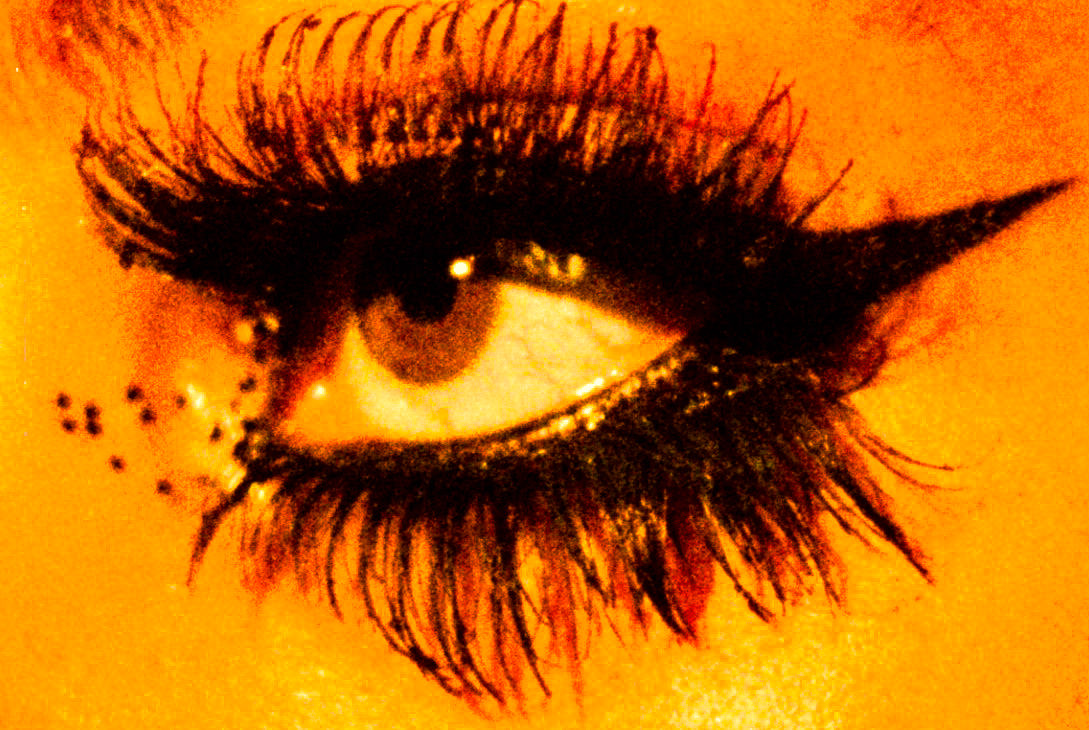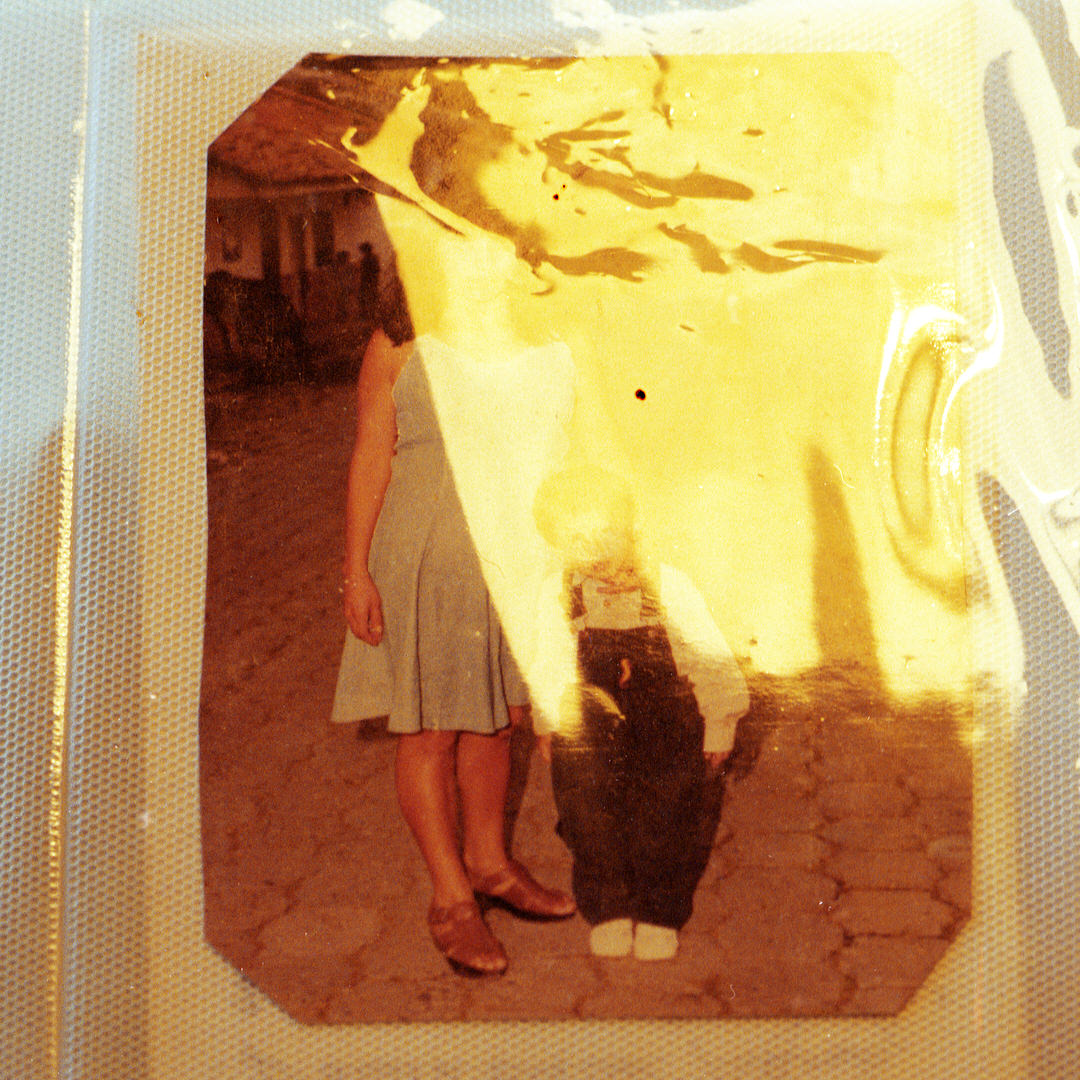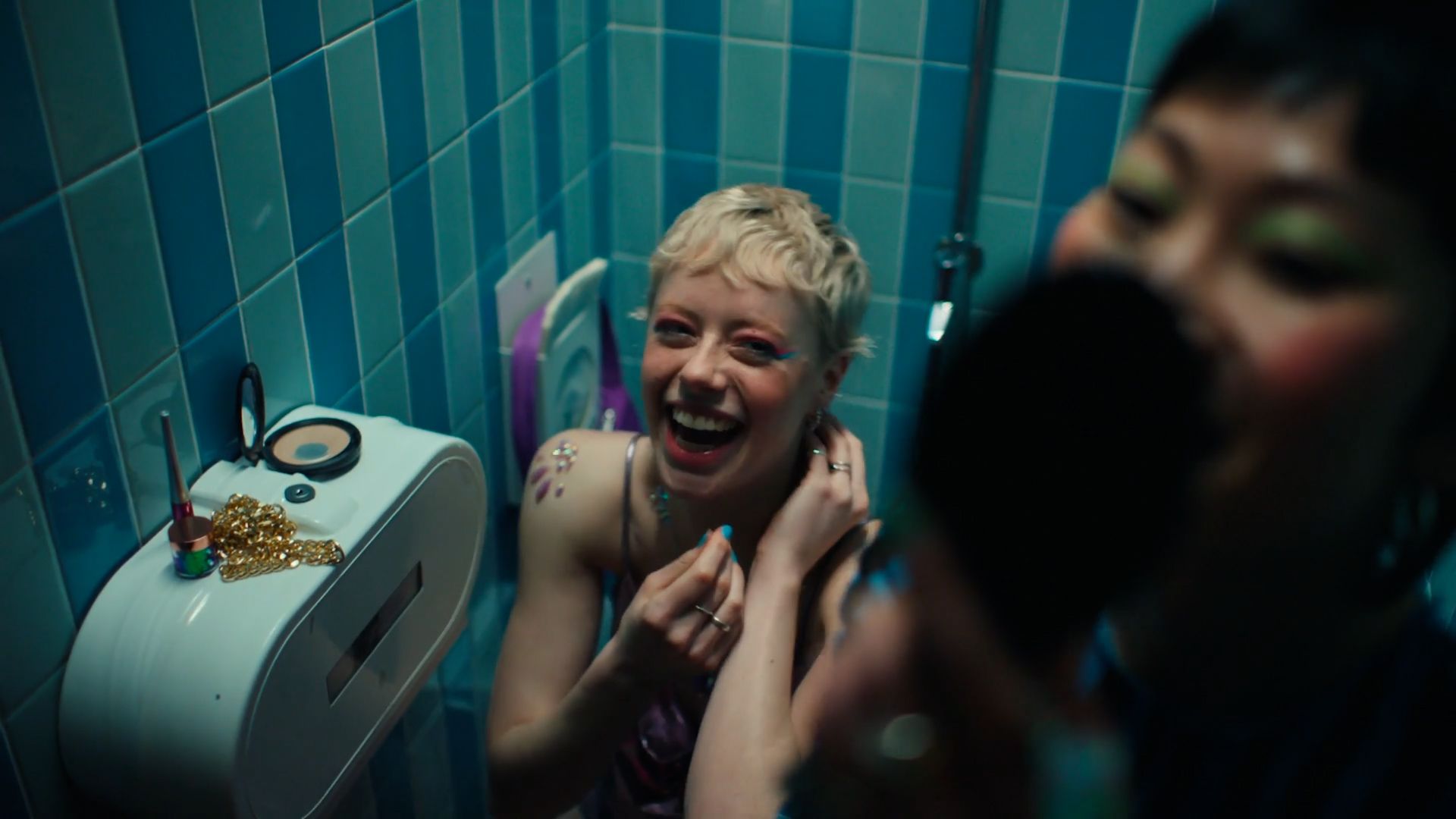BEYOND THE FRAME
January 07, 2025
Since 2023, ILA, FOMU, and Het Bos have been working together to support emerging visual artists in their professional development. Looking ahead, we aim to create a platform where emerging artists can showcase their work at Het Bos.
These exhibitions will feature not only artists’ work but also curated talks and immersive experiences, highlighting the unique contributions of Het Bos, FOMU, and ILA Foundation—three organisations united by their commitment to nurturing artistic talent.
ILA Foundation, FOMU, and Het Bos are organising a group exhibition from the 6th of February to the 15th of February, featuring the works of Yaqine Hamzaoui, Darwin Cabrera, Salim Azaimi and Pepijn Leenders.

Yaqine Hamzaoui
Yaqine Hamzaoui is a Belgian photographer and director known for her intimate and evocative approach to capturing human connection. While her roots are in documenting Brussels’ vibrant music scene, her work has evolved to explore a broader spectrum of subjects and stories, transcending genres and highlighting the unique bond between the person in front of the camera and herself.
Hamzaoui’s talent has been showcased through various exhibitions and collaborations, including the documentary photography series “What if I was born in Morocco,” which delves into Moroccan skate culture through the eyes of young local women.
Her distinctive vision has drawn clients such as Adidas, Dickies, and Natan, enabling her to craft engaging campaigns that resonate deeply. With her thoughtful lens, Hamzaoui continues to shape artistic identities and contribute to contemporary visual culture, always pushing the boundaries of her craft.


What is your creative process?
I don’t have a specific creative process. My whole life is a creative process. Sounds silly, maybe, but that’s how I choose to live this life.
Everything I do contributes to what I eventually produce. It’s mostly about collecting all types of things (unconsciously as well). And when it’s time to create, I have a whole box of ideas ready. But I let my intuition pick and guide most of the process.
I started collecting writings, drawings, photos, etc., on one platform. Just knowing that it’s all in one place gives me a sense of ‘fil rouge’.
Where do you find your inspiration?
Same way: It’s a matter of knowing how I want to live my life and the privilege to have the space for it. In everything I create, there’s a bit of me experiencing this life, everything that catches my attention, makes me feel something that I want to remember and hold on to.
I can be inspired by a little drawing on a random wall, my perfectly made coffee, a song from Sam Gendel, or deep conversations with loved ones. My therapist, random people in the streets, nature, sunsets, or every cultural thing happening (whether it’s good or bad) there is always something to draw inspiration from. It’s a matter of being able to see it, being open to it, and catching it.

Which project best represents you as an artist?
I don’t have a single project that represents me best as an artist. I think it’s more about certain pieces that touch me very specifically in a particular moment, but even that changes all the time.
However, there is a very memorable experience for me, and that was the exhibition I did at ‘Het Concertgebouw’ in Bruges. The whole context and process are very close to how I see making art. The project was called 24 Hours: 13 artists in a big building they didn’t know, creating together. The satisfaction of bringing people together, seeing sparkles, and being able to capture that—it brings me alive.
What are you most excited about for this exhibition?
The process of having something in your head and being able to bring it into a space is incredibly exciting to me. The twists it can take during the process and all the possibilities that unfold keep me inspired.
The conversations with my co-artists and everything that stems from those moments are equally fulfilling. And, of course, the joy of simply chilling in our own creative flow.

Darwin Cabrera
Darwin T. Cabrera (°1995, Ecuador) is a photographer and videographer exploring the essence of portraiture through photography and video.
His work examines the connection between the subject and the camera, often incorporating temporal and spatial dimensions to traditional portraits. Cabrera captures diverse contexts, from nightlife to public spaces, blending singular images with sequences to highlight the tension and time involved in creating a portrait.
A 2019 photography graduate, his work has been exhibited at Kavka Antwerp, Recyclart Brussels, and Stelplaats Leuven


What is your creative process?
My creative process starts with personal narratives and memories, which I deconstruct and transform into layered visual stories. Each project reflects the phase I’m experiencing, helping me articulate my inner self, explore life’s complexities, and understand my identity.
Portraiture is central to my work, as I’m fascinated by the individuality of people and the sociological nuances of human behavior. Mixed media allows me to push the boundaries of portraiture, offering diverse ways to connect and communicate emotionally.
My practice combines video, archival materials like family photographs, and new portraits, recontextualizing them in contemporary settings. Through this interplay, I investigate the relationship between past and present, reflecting on how time reshapes memory and perspective, narrowing the border between fiction and reality.
Where do you find your inspiration?
My inspiration stems from my dual cultural identity as an Ecuadorian raised in Belgium and the migration experiences within my family. My mother’s journey deeply influences my work, particularly how photographs kept us connected during times of separation.
I draw from the textures of memory and the rich vibrancy of Spanish and Latin American culture. Influences include the bold aesthetics of Pedro Almodóvar, 90s Mexican cinema, Lucrecia Martel’s Argentine films, and the magical realism of Gabriel García Márquez. The evocative folklore music of artists like Julio Jaramillo and Chavela Vargas also shapes my creative voice, as I pull elements from across Latin America to rediscover and reshape my roots.
These cultural connections ground me and help reclaim the identity I felt distanced from during my adolescence. They are more than inspirations—they’re acts of preservation and celebration of my heritage, offering solace when I feel out of place in the Flemish landscape.
Which project best represents you as an artist?
The project I’m currently working on, which explores themes of adolescence, migration, memory, and family, feels like the truest representation of me as an artist. It blends personal narratives with universal resonance, telling a story through portraits of my half-brother and mother, alongside archival photographs and texts.
This project reflects my artistic voice and experience as a child migrant, exploring nostalgia, longing, and resilience. It took time for me to feel ready to revisit my adolescence and youth. I used to try to hide my presence in my work, but I’ve come to realize that traces of the creator are always there.
Embracing this has made my work more authentic and has helped me understand myself better as an artist. This project encapsulates that journey, merging my personal story with my creative identity.


What are you most excited about for this exhibition?
I’m most excited to collaborate with the other talented artists involved in this project. Sharing ideas and learning from their perspectives inspires me and offers an opportunity for mutual growth. Together, we can create a meaningful collective experience.
I’m also eager to share my story.
By weaving photographs with text fragments, I aim to create an immersive experience that speaks to migrants and anyone who has felt the weight of separation or cultural displacement.
Salim Azaimi
Salim Azaimi - 2005° - also known as videobySalim, is a talented creative who captures the world through his unique perspective. With a flexible approach, Salim doesn’t confine himself to a specific style but seamlessly integrates his vision into everything he creates, working primarily in photography and videography.
As the youngest Bosacademie resident, Salim has already left a strong impression with his talent and dedication. During his internship at Het Bos, he contributed to various creative projects, including designing the concept for the poster of Vruchtbare Grond 2024. Collaborating with Salah Van Puymbroeck to refine the final design, Salim gained invaluable insights into the art of fine-tuning and teamwork in a professional creative environment.

What is your creative process?
My creative process revolves around observation, trust, and finding a balance between chaos and control.
As a photographer, videographer, and graphic designer, I often start by gathering inspiration from unexpected places: a conversation, a piece of music, or even a random street scene I come across. This sparks my thinking and helps me find a direction, but I don’t always let the process be predetermined. I believe in letting go of strict plans and embracing the spontaneity of the moment.In photography and videography, I often work with my inner vision. Sometimes I simply capture what catches my eye without overthinking the technical aspects. When I look at the images later, I often discover new layers I hadn’t expected. This natural process of 'discovery' leads to surprising results, which I later refine during post-production.
Time spent in the studio or in front of the computer is just as important to me as time behind the camera: that’s where the final touches are made, and my work finds its ultimate identity.As a graphic designer, I also seek visual simplicity but with a deeper layer. I enjoy experimenting with shapes, lines, and colors that, although they may not seem balanced at first glance, eventually tell a strong visual story. For me, it’s a process of trying, adjusting, and trying again. The most beautiful part is when I don’t know everything in advance, but through letting the work evolve on its own, a powerful result emerges.
Ultimately, I see my creative process as a journey, constantly seeking new ways to translate the world into images and designs. It’s not a straight line, but rather a path full of twists, discoveries, and surprises.
Where do you find your inspiration?
My inspiration often comes from the most unexpected places, but I find that it’s always rooted in some form of interaction with the world around me. In nature, I find a lot of peace and wonder how light changes in a particular setting, or how colors unconsciously communicate with each other. It’s often the way people move or interact with each other that resonates with me. I try to capture that dynamic, whether in photos, videos, or designs.I also draw a lot of inspiration from art, music, and literature. A book or song lyric can unexpectedly trigger new ideas that I want to translate visually.
I see my work as a kind of visual translation of the emotions I experience, so ideas often stem from personal experiences or even from the everyday conversations I have.Technique also plays a role in my inspiration experimenting with new methods or equipment always presents new possibilities and challenges. But what inspires me most is the moment of unexpected beauty: a scene that suddenly unfolds, a composition that seems to come together on its own, or a graphic element that hits exactly the right emotional note.
For me, it’s always about being alert, listening, and paying attention to what presents itself.
Which project best represents you as an artist?
A while ago, I had a shoot with Ayman Sitiane for my upcoming short film "Shkoun Nta". It wasn’t just a photoshoot; it was a true creative journey.
The experience was truly special; there was a sense of connection, of sharing ideas, and creating something unique. It’s a magical moment to see different minds come together to achieve the same goal, with a shared passion for art and storytelling.
What struck me most was the beauty that emerges when creatives understand and amplify each other. There was so much respect for each other’s work that everything seemed to flow naturally. The energy and atmosphere present during the shoot added an extra dimension to it.
It wasn’t just a visual experience, but also a deeper journey through emotions and stories we wanted to tell together. It reinforced for me how powerful and inspiring it can be when different talents come together, appreciate each other’s work, and at the same time create something new and beautiful.


What are you most excited about for this exhibition?
In this exhibition, I want to explore the concept of a hidden archive not one kept in documents or physical objects, but in the invisible connections between people and generations. The idea of telepathy here is not mystical, but a way to understand how memories and stories can move beyond traditional archives, existing in our collective memory.
The exhibition blends old archival photos and abstract images that visualize thoughts and energies. For example, a photo of a guest holding a weapon could accompany an abstract image of a silent thought or vague memory, highlighting the unspoken stories passed through silent connections. This experience, almost telepathic in its intensity, asks: is an archive limited to physical documents, or can memories and knowledge be stored and transmitted in more subtle ways? One example: A photo of a person standing in profile against a dark blue sky, bathed in a dramatic red glow. The intense lighting feels like an energy field connecting them to a higher dimension. The weapon they carry is less a tool of power and more an extension of their consciousness, a channel for inner energy. The contrast between the calm blue sky and the fiery glow suggests two worlds the earthly and the spiritual coming together.
The image tells the story of someone who is in control of both what is visible and what is not.

Pepijn Leenders
Pepijn Leenders, also known as Pippin, is a Brussels-based multidisciplinary artist working across music, theater, dance, photography, and film. Over the years, his projects have been rooted primarily in music, where he has established himself as a composer and musician with a deeply emotional and atmospheric approach. Notably, he co-composed the music for Beating Choir/Chœur Battant, a project by Le Carrousel and BRONKS, and co-wrote t’inquiète, performed by Gala Dragot at Eurosong 2023.
Currently, Pepijn is focused on expanding his practice into the fields of film and photography, with the goal of fusing music, film, and photography into complementary mediums that hold equal weight. His aim is to create works that transcend traditional boundaries, showcasing these integrated forms in exhibition spaces.

What is your creative process?
The starting point for me is trying to open my self and being sensible to whatever is happening around me, with this open awareness I try to approach work in an instinctual way at first, I love the moments where it feels that I don’t have control of what comes out, from capturing a situation on photo, video or audio to the process of extracting from that and bring the material into the artistic synthesis phase where I mingle with it, put different material together, and even manipulate it.
There are these instances where it feels that something clicks, falls together and makes sense to me in that moment, (often a non-mental moment) where there seems to form a red line. I think this is the most fun in a creative process and its wakes up the inner child which is my guidance as it keeps me young, keeps my brain neuroplastic and above all I think it’s a trustable untamed and unconditioned side that is part of every human being.
Of course it goes hand in hand with the part that demands discipline and expertise that is as valuable in this process.
Where do you find your inspiration?
I get my inspiration from just living, as simple as it sounds, I feel in today's time with all the attention grabbing algorithms around it’s not as easy as it sounds to remain centred and receptive to whatever comes to me.
So my tools for living that I find helpful are the same tools for receiving inspiration. And this involves practicing meditation in whatever I’m doing, by the help of often more eastern methods. With photography for me it’s less about preserving a moment in time and more about engaging with the mystery of what it means to be present in a constantly unfolding world. For me that’s where the magic lies, the impermanence of things.
I’m interested in how the act of seeing can become a form of meditation and a way to dissolve the boundaries between subject and object.


Which project best represents you as an artist?
It's hard to pinpoint a single project that fully represents me as an artist. I believe the entire spectrum of my work—both collaborative and solo, including projects that have been realised as well as those still in progress—offers a more authentic representation of who I am creatively.
Lately, I’ve been delving into photography and film, mediums that have always intrigued me and provide a unique freedom of expression distinct from music. What excites me most is how these projects are beginning to intersect, creating points of connection between these mediums rather than existing as isolated forms.
What are you most excited about for this exhibition?
I’m excited to bring new work to light including the process towards it.
The past year I’ve been working more with the medium of photography and film and it reignited my love for this medium so I feel grateful to have the opportunity to showcase some of that work in this setting.
It feels like a big experiment as it’s not just about what I’m presenting but also about seeing how the space transforms when all the artists' works converge and it makes me curious how the dialogue between the different works will unfold leading up to the exhibition.



